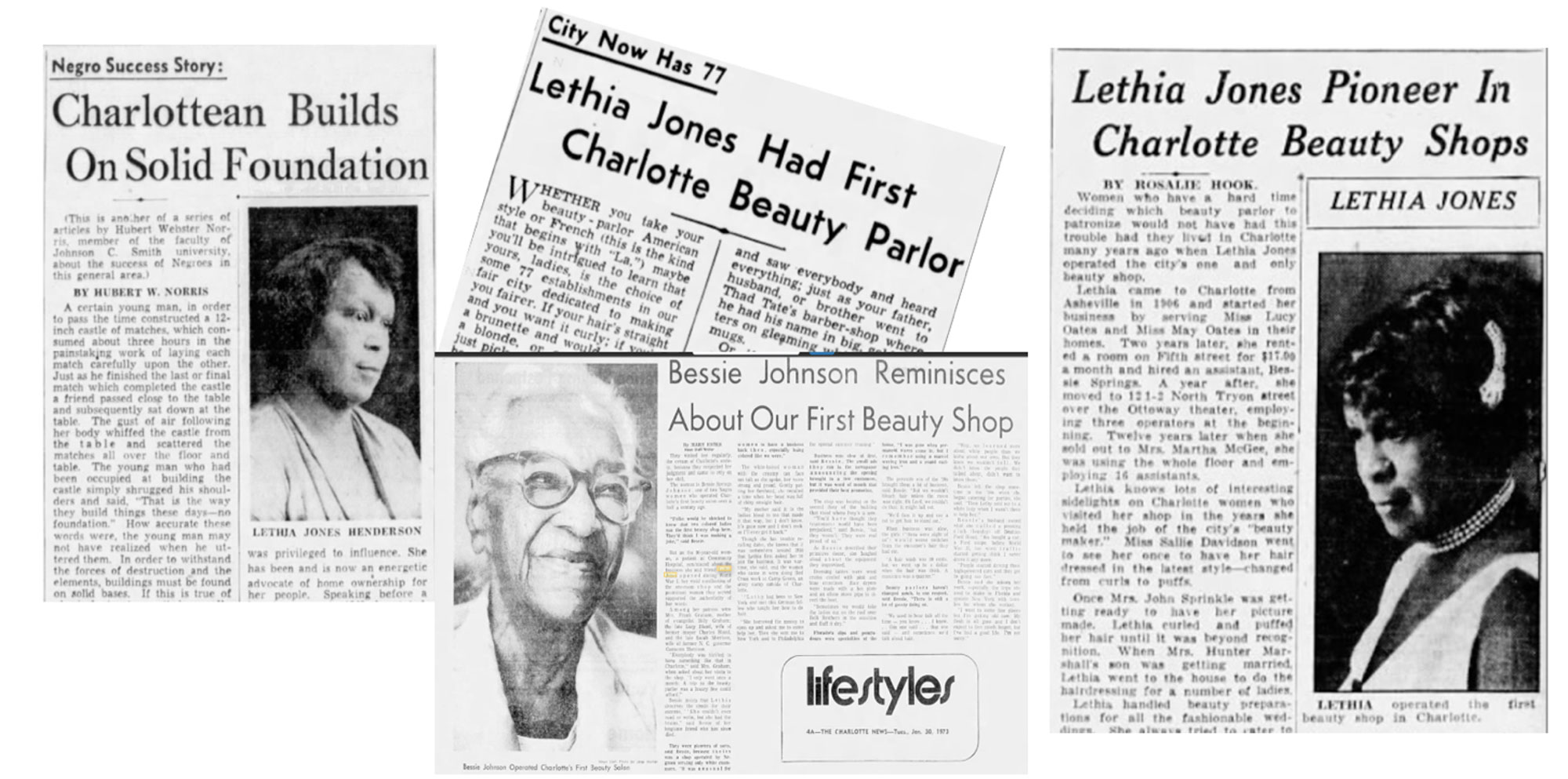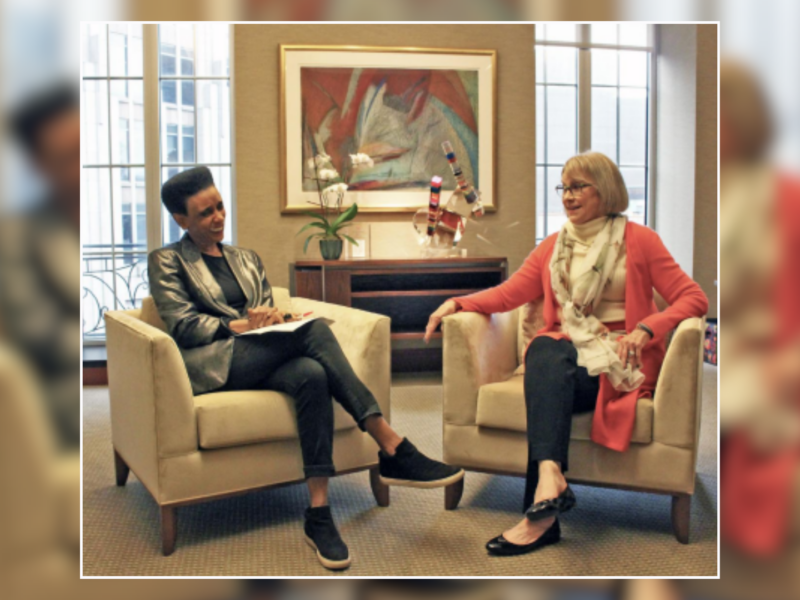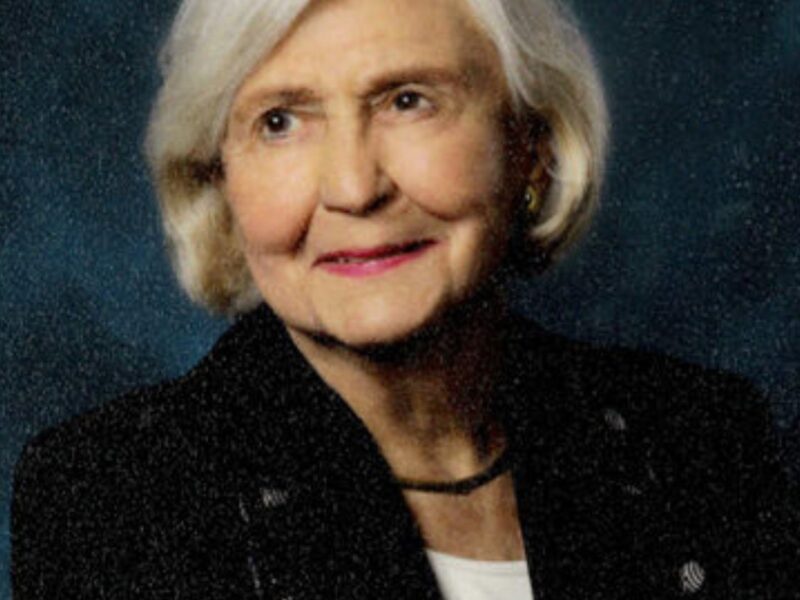
Lethia’s Legacy
From entrepreneur to investor to eternal philanthropist
Lethia Jones Henderson – entrepreneur, business owner, real estate investor, philanthropist – may have been the best-known woman in Charlotte during the first decades of the 20th century. She opened Charlotte’s earliest beauty salon about 1906. It won an enthusiastic following among the city’s leading white women – remarkable since she was an African American and the South was in its deepest nadir of segregation. She invested her profits in real estate. After she sold the salon in 1920, she was able to live on rental income and take an active role in civic affairs and philanthropy.
Born in the early 1880s, Lethia Jones Henderson grew up in Asheville where she attended the Allen School, an academy for African American women founded by a Methodist missionary. She journeyed to New York City to learn hairdressing and manicuring, then returned there a few years later to study in the new field of “chiropody,” today called podiatry. Beauty services were becoming professionalized during the decades around 1900, with schools, trade associations and licensing coming into existence. Henderson was a contemporary of Madame C.J. Walker, the famed African American beauty entrepreneur who built a nationwide business serving Black clients and also became renowned as a philanthropist. Henderson trod the same path, at a smaller scale, and serving white customers.
Brief newspaper mentions from the 1900s-1920s, together with a remarkable string of articles published later in Lethia Jones Henderson’s life, give a sense of the Charlotte institution that she created. During the salon’s existence hairstyles shifted – from long hair “marcelled” into waves with a hot iron, to the short “bob” of the Roaring Twenties. Dealing with wealthy clients required considerable patience and interpersonal skills. “Lethia always tried to cater to her customers, and, in that time, it was a hard job for they had their peculiarities,” one interviewer noted, naming a particular woman who “had the air of Queen Victoria” and “always had to be painted and polished ‘just so.’” Morrow Graham, mother of evangelist Billy Graham, vividly remembered Jones’ downtown salon: “Everyone was thrilled to have something like that in Charlotte. … I only went once a month. The luxury of a beauty salon visit was something that few could afford.”
As Henderson grew her beauty business, she began putting money into real estate. Johnson C. Smith University professor Hubert Norris, who interviewed her near the end of her life, reported: “Lethia Jones attributes her material success to … investment in real estate.” She bought an initial couple of properties in First Ward and in the Cherry neighborhood in 1907 and 1913. Then developers announced the opening of a new African American suburb called Washington Heights at the end of the streetcar line beyond JCSU – believed to be the only Black “streetcar suburb” in the United States. Henderson built a home in Washington Heights for herself and, as her finances allowed, began acquiring nearby lots. By the 1930s, she owned six parcels along Beatties Ford Road in the vicinity of Tate Street (named for Charlotte’s leading Black barber) and Booker Street (named for Booker T. Washington).
Each parcel held two or three rental units, providing a steady income that she used to better herself and her community. She earned a degree in religious education from the respected Gammon Theological Seminary in Atlanta and also studied at JCSU. She took an active role at what is now Simpson-Gillespie Methodist Church. And she personally taught adult literacy classes. “She encouraged frugality and sound investment on the part of all those whom she was privileged to influence,” wrote professor Norris, who called her “an energetic advocate of home ownership for her people.”
When she died in 1955, the nationally-known Charlotte-based Civil Rights journalist Trezzvant Anderson was an active pallbearer, and Charlotte Mayor Victor Shaw was among her honorary pallbearers – indications of the respect paid to her by both Black and white Charlotteans.
Her will dedicated her savings to a trust fund “for promotion of charitable work among the members of the colored race.” The Lethia Henderson Fund for a Healthy Black Community was established at Foundation For The Carolinas in 1981 to permanently support needs in the Black community. Henderson’s gift also helped seed the African American Community Fund, which was relaunched as Foundation For Black Philanthropy in 2021, and continues to build on Henderson’s legacy and have a significant impact through its grantmaking.




